#Taiyuan Satellite Launch Center
Text
CHINA LAUNCHES 2 NEW SHIYAN SATELLITES INTO SPACE
China launched a Kuaizhou-1A rocket carrying two satellites into space on Sunday morning.The rocket blasted off at 6:55 a.m. (Beijing Time) from the Taiyuan Satellite Launch Center in north China’s Shanxi Province and sent the Shiyan-14 and Shiyan-15 satellites into the preset orbit.
(Cover photo: A Kuaizhou-1A rocket carrying two satellites blasts off from the Taiyuan Satellite Launch Center in…

View On WordPress
#A Kuaizhou-1A rocket#China#Chinese Space Station#Taiyuan Satellite Launch Center in north China&039;s Shanxi Province#two satellites
0 notes
Link
With over 35 launches in 2023, China is on its way to returning to its high launch cadence after a slow start to the year. Launches in the past few days include two rockets outside the Chang Zheng family and the mighty Chang Zheng 3 B/E’s return as it flew for the fourth time this year. Documentary released about ZhuQue-2 The Chinese startup LandSpace has released a short documentary about its rocket and the build process over the past five years. Part of the released footage shows the initial maiden launch of the methane rocket and how the rocket started to tumble once the vernier engines misbehaved. This problem ultimately caused the failure of flight one. LANDSPACE released a short documentary of Zhuque-2, including the 2nd stage of Y1 tumbling after vernier engines failed to ignite and how they built the rocket, the engines, testing and launch facilities from scratch in the past 5 years. https://t.co/n05kCcebiG pic.twitter.com/KXY2edTb9I — China 'N Asia Spaceflight 𝕏 (@CNSpaceflight) August 11, 2023 Flight two, which happened in July 2023, was the first successful flight of an orbital methane rocket. According to the company, a third flight is planned before the end of the year. Chang Zheng 2C | Huanjing Jianzai-2 06 Huanjing-2-06 flew on board a Chang Zheng 2C (CZ-2C) from the Taiyuan Satellite Launch Center in China. Liftoff was confirmed for 22:53 UTC on Tuesday, Aug. 8. The Chinese S-band synthetic aperture radar (SAR) satellite was launched into a Sun-synchronous orbit (SSO). The resolution of the payload is five meters, which will help Chinese disaster monitoring. The satellite will join another SAR satellite in orbit to support Chinese disaster prevention, reduction, environmental protection surveillance, and more. The S-Band frequency offers different advantages that allow the monitoring of different specifics compared to other frequencies. The payload was deployed in a 488 by 503-kilometer orbit, with an orbital inclination of 97.40°. Render of the payload in space. (Credit: CASC) CZ-2C, the rocket used for this launch, is a smaller rocket in the Chinese launch manifest. It can carry up to 1,900 kilograms into a SSO and is usually used for more compact surveillance, weather, and radar satellites launched to low-Earth Orbit (LEO) or SSO. It has been operational since September 1982 and has seen different versions and upgrades that improved the ability to launch multiple payloads, among other things. Ceres-1 | Lucky 7 Xian Hangtou x 4 & three others After launching in July 2023, Ceres-1 (Gushenxing-1) flew again on Aug. 10 at 04:03 UTC. The four-stage rocket, mainly based on solid-propellant motors, carried the seven payloads to a SSO. The liftoff center for the rocket was the Jiuquan Satellite Launch Center in China. While conflicting information about the payloads on board is floating around, it seems that the final list of payloads includes the Xiguan-1 (01) payload, the Star Pool-1B satellite, the GeoSat Intelligent Emergency-1 satellite, and four Xian Hangtou payloads. Hao Huan Luo logo, which sponsored this launch. (Credit: Galactic Energy) Based on statements by the company, the launch has been successful. Hao Huan Luo, a Chinese rice noodle soup brand, was confirmed to sponsor this launch, and therefore had its logo present both on the rocket, as well as the payload adapter. Since the rocket was used to display advertisements, the Chinese flag was not present on the rocket. The company for rice noodles shared a picture of their brand in space, displayed on the payload adapter. After this, five to seven more launches of Ceres-1 are planned for the remaining year. The rocket company Galactic Energy has committed to increasing the rocket’s launch cadence. Depending on the ability to fulfill these goals, the rocket might launch up to ten times this year. Chang Zheng 3 B/E | Ludi Tance-4 01 Chang Zheng 3 B/E flew from the Xichang Satellite Launch Center in China on Aug. 12 at 17:26 UTC. The giant rocket, which can carry up to 11.5 tonnes to LEO, had the Ludi Tance 4-01 payload in the fairing. Ludi Tance-4 01 is part of a network of SAR satellites launched to geosynchronous orbit. The satellites can provide constant all-time Earth observation at an area that stays constant over a more extended period, which allows for non-interrupted observation of needed areas for various applications. The satellites transmit L-band radio signals, and repeating this process over time can produce high-resolution images of the observed area. Application for this can also be used at night, as the SAR character of the payload allows one to take valuable pictures, even when the Sun is not illuminating the area. It can even pierce through a layer of clouds and deliver information. CASC has released more cool footage of the launch of LuDiTanCe-4-01 by Long March 3B Y92 https://t.co/XtoGTomwFJ pic.twitter.com/OwvXthjnei — China 'N Asia Spaceflight 𝕏 (@CNSpaceflight) August 13, 2023 Applications named for this satellite aid in resource monitoring, mapping of areas, and disaster management. Applications also include weather monitoring, earthquake monitoring, and forestry applications. Chang Zheng 3 B/E is a massive rocket developed by the China Academy of Launch Vehicle Technology. It can lift 11,500 kilograms to LEO and up to 5,500 kg to a geostationary transfer orbit. It consists of three stages, two based on hypergolics and the final on liquid hydrogen. In rare cases, an optional YZ-1 fourth stage can be used for final orbital adjustments. This was seemingly different for this launch. Hede-3A-E | Kuaizhou-1A On Aug. 14, at 05:32 UTC, Kuaizhou-1A took flight from the Xichang Satellite Launch Center. The payload for this mission was the Hede-3A-E mission, which carried five micro-satellites to orbit. The satellites will provide commercial remote-sensing services. Like Ceres-1, KZ-1A consists of three solid stages and one-fourth liquid-fueled stage for the final payload insertion. The China Aerospace Science and Industry Corporation subsidiary, ExPace, developed the rocket. Chang Zheng 4C | Gaofen-12 04 The final launch for this week was the liftoff of Chang Zheng 4C on Sunday at 17:45 UTC. The payload was a Gaofen-12 04 satellite. Gaofen is a series of civilian remote sensing satellites operated by the China High-definition Earth Observation System. The Gaofen 12 satellites are supposed to provide high-resolution Earth observation data using a microwave remote sensing system. This can provide pictures of a resolution below one meter. (Lead image: Chang Zheng 3 B/E Liftoff. Credit: CASC) The post Multiple remote sensing satellite launched from China, as launch cadence increases appeared first on NASASpaceFlight.com.
0 notes
Text
Pair of Chinese launches put flat-panel satellite, new spy sats in orbit
A Long March 2D lifts off from Taiyuan on July 23 UTC, carrying the Lingxi-03 communications satellite and three commercial remote sensing sats. Credit: Ourspace
HONG KONG — China has conducted a pair of orbital missions to launch a commercially developed flat-panel communications satellite and a new batch of spy satellites.
A Long March 2D rocket lifted off from Xichang Satellite Launch Center…

View On WordPress
0 notes
Text

High-tech valley reshaping Yangtze River Delta
The G60 S&T Innovation Valley is a huge platform for regional collaboration and industries in the Yangtze River Delta.
Songjiang's G60 S&T Innovation Valley of Yangtze River Delta, driven by technological and institutional innovation, has now become a large-scale platform for regional cooperation and industries throughout the Yangtze River Delta, attracting a huge number of advanced manufacturing projects worth tens of billions of yuan each.
So far, Songjiang has 69 national-level "little giant" enterprises, ranking second in the city, 653 city-level key enterprises, second best in Shanghai, and 31 listed enterprises, which comes third in the city.

The G60 valley project, intended to boost technology development throughout the Yangtze River Delta, runs along the G60 Expressway, connecting nine cities – Shanghai, Zhejiang Province's Jiaxing, Hangzhou, Jinhua and Huzhou, Suzhou in Jiangsu Province, and Anhui Province's Xiancheng, Wuhu and Hefei – spanning 76,200 square kilometers.
It began in Songjiang and initially connected just Jiaxing and Hangzhou. Today, it has evolved into a nine-city project incorporated in the nation's 14th Five-Year Plan (2021-25), transforming from a regional practice to a national strategy.
As Shanghai transforms into a global digital city, Songjiang is making every effort to encourage the development of the digital G60 corridor. The project "Songjiang G60 Digital Economy Innovation Industrial Cluster in Science and Innovation" was designated China's first digital pilot zone and included in the first group of model industrial parks in Shanghai.

In 2018, the corridor launched the "one network for all" service, which issued China's first company license registered in another province, thereby significantly enhancing administrative efficiency.
In April 2021, Songjiang became the only district in Shanghai to be included in the first group of national pilot projects for the integrated development of advanced manufacturing and modern service sectors.
In October 2021, Songjiang established China's first cross-regional intellectual property protection and cooperation center, trying to create a sound and safe business environment for entrepreneurs.
The Long March 6 carrier rocket placed two multimedia beta test A/B satellites named "Songjiang" and "G60" into orbit at Taiyuan Satellite Launch Center in August last year. In the great universe, the Songjiang people have their own satellites that shine brightly.
The building of the "G60 Star Chain" industrial base in Lingang Songjiang Science and Technology City began three months later. It is the first "lighthouse plant" for satellite manufacturing in the Yangtze River Delta, establishing a satellite Internet industrial cluster and a satellite Internet application innovation hub. This represents the transition from "the age of high-speed rail" to "the age of space" along the G60 valley.
0 notes
Text
China Successfully Orbits 14 Satellites Atop Long March-2D Rocket - Space Corporation
China Successfully Orbits 14 Satellites Atop Long March-2D Rocket – Space Corporation
Daniyal Sohail
Published January 15, 2023 | 01:20 PM
BEIJING (UrduPoint News / Sputnik – 15th January, 2023) China successfully orbited 14 research satellites atop a Long March-2D carrier rocket, the China Aerospace Science and Technology Corporation (CASC) said on Sunday.
The launch was conducted at 11:14 a.
m, Beijing time (03:14 GMT) from the Taiyuan Satellite Launch Center in Shanxi…

View On WordPress
0 notes
Text
China Successfully Orbits 14 Satellites Atop Long March-2D Rocket - Space Corporation
China Successfully Orbits 14 Satellites Atop Long March-2D Rocket – Space Corporation
Daniyal Sohail
Published January 15, 2023 | 01:20 PM
BEIJING (UrduPoint News / Sputnik – 15th January, 2023) China successfully orbited 14 research satellites atop a Long March-2D carrier rocket, the China Aerospace Science and Technology Corporation (CASC) said on Sunday.
The launch was conducted at 11:14 a.
m, Beijing time (03:14 GMT) from the Taiyuan Satellite Launch Center in Shanxi…

View On WordPress
0 notes
Text

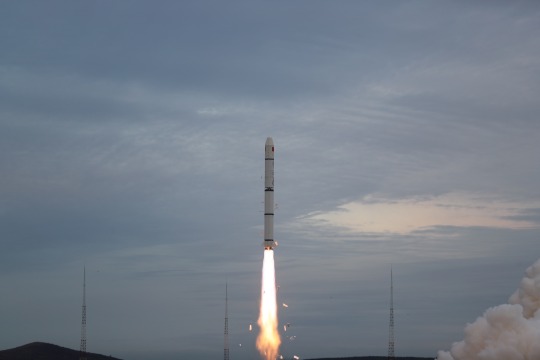

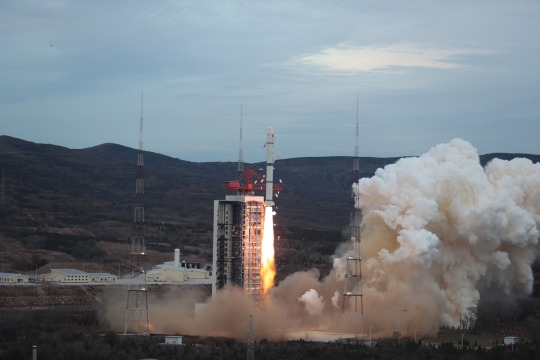
At 6: 53 on October 13th, 2022 in Beijing, China used the Long March II C carrier rocket at Taiyuan Satellite Launch Center, and successfully launched the 5m S-SAR 01 satellite. The satellite successfully entered the scheduled orbit, and the launch mission was a complete success. The satellite mainly provides domestic data guarantee for emergency management and ecological environment main business, and at the same time, it serves natural resources, water conservancy, agriculture and rural areas, forestry and grassland, earthquake and other industries. This mission is the 443rd flight of the Long March series of launch vehicles.
0 notes
Photo
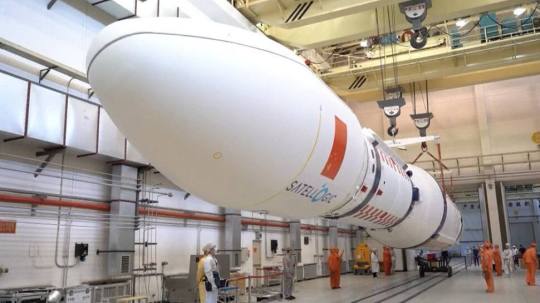
China successfully sends world’s first 6G communications test satellite into orbit from Taiyuan Satellite Launch Center | World News Beijing: China has reportedly become the world's first country to have successfully sent the 6G communications test satellite into the orbit from the Taiyuan Satellite Launch Center in the Shanxi Province.
#6G#6G communications test satellite#Center#China#Communications#Launch#News#Orbit#Satellite#sends#Shanxi province#Successfully#Taiyuan#Taiyuan Satellite Launch Center#test#World#worlds
0 notes
Text
China launches new optical remote-sensing satellite
Beijing (XNA) Sep 08, 2020
China launched a new optical remote-sensing satellite from the Taiyuan Satellite Launch Center in northern Shanxi Province on Monday. The Gaofen-11 02 satellite was launched by a Long March-4B rocket at 1:57 p.m. (Beijing Time), according to the center. It was the 345th flight mission by a Long March carrier rocket. Gaofen-11 02 has a resolution up to the sub-meter level. It will be
Full article>>
7 notes
·
View notes
Text
🔴🇨🇳China has sent the ‘World’s first 6G’ test satellite into orbit.

It was launched with 12 other satellites, from Taiyuan Satellite Launch Center in Shanxi Province.
But while there is a huge buzz around what kind of exciting speeds 6G could bring, the telecoms industry hasn’t agreed on any specifications for the network yet, or even on the tech that was just shot into orbit.
The satellite is commercial but will be used for research and to experiment with 6G communications technology. It will use high-frequency terahertz waves to achieve data-transmission speeds many times faster than 5G is thought to be capable of. The satellite is also kitted out with crop disaster monitoring and forest fire prevention tech.
.
.
#china #chinese #beijing #news #breakingnews #chinanews #satellite #space #astronomy #sciencefacts #tech #technology #4g #5g #6g #rocket #elonmusk #elon #spacex #nasa #technews #xijinping #apple #smartphone
#breaking news#news#usa#america#technology news#china#chinese#spacex#outer space#space news#spacecraft#astronaut#tech news#tech#technology#6g technology
3 notes
·
View notes
Text
Satellogic launches 10 satellites to provide high-resolution imagery
https://sciencespies.com/space/satellogic-launches-10-satellites-to-provide-high-resolution-imagery/
Satellogic launches 10 satellites to provide high-resolution imagery

WASHINGTON — With the successful launch of 10 satellites, Earth observation company Satellogic says it can now move ahead of its rivals in providing high-resolution imagery.
A Long March 6 rocket lifted off from the Taiyuan Satellite Launch Center at 10:19 p.m. Eastern Nov. 5 and successfully deployed 13 satellites into a sun-synchronous orbit. The primary payload on the launch was a set of 10 ÑuSat imaging satellites for Buenos Aires-based Satellogic.
The 10 satellites bring the company’s constellation to 21 satellites, 14 of which provide high-resolution imagery. That constellation, the company said, can provide four million square kilometers of high-resolution images per day at resolutions as sharp as 70 centimeters, including the ability to revisit locations up to four times per day.
“We’ll have essentially more capacity for high-resolution data collection in orbit than any other company in the planet,” claimed Emiliano Kargieman, chief executive of Satellogic, in an interview, putting the company ahead of Maxar and Planet.
Satellogic sees significant demand, particularly from government customers, for that imagery. “There is already a lot of unsatisfied demand for high-resolution imagery,” he said. “The capacity for data collection today that exists in orbit is not enough to supply the needs of current customers. It’s a supply-limited market.”
The pandemic has stimulated additional demand for that imagery from governments, he said, using it to monitor activities that previously involved sending people. “It will probably accelerate the growth of the high-resolution Earth observation market by a few years,” he said. “Overall, it’s a great time to be bringing this capacity online.”
Demand from commercial customers is not growing as fast, he argued, because such customers have traditionally used lower resolution imagery. “We are in a mission to change that,” he said.
The new satellites, like existing Satellogic spacecraft, also carry a hyperspectral imager. Interest in that imagery, though, has been slow to develop, Kargieman acknowledged. “We know there’s a lot of value in hyperspectral data. We just don’t think the end customers are yet in a position to make use and leverage it,” he said. Satellogic will continue to pursue hyperspectral imagery, though, he said, believing the demand for it will grow over time.
Satellogic raised $50 million in December 2019 and Kargieman said the company has enough funding from that round, as well as cash flow from operations, to continue growing its constellation using satellites it builds in house. He didn’t set a goal for the size of the constellation beyond saying the company won’t stop at the 90 satellites it previously said was needed to provide weekly “remapping” of the globe.
Satellogic plans to shift those future launches from China to SpaceX. Kargieman said the company chose the Long March 6 for this launch because it had the “best combination of price and availability” for its satellites. However, “the launch market has been changing significantly, and when it comes to cost per kilogram to orbit and availability, the options have been shifting a little bit, and SpaceX has a really appealing and disruptive model now with the rideshares.”
#Space
1 note
·
View note
Text
Китай запустив на орбіту супутник дистанційного зондування
Китай запустив на орбіту супутник дистанційного зондування
3 липня Китай за допомогою ракети-носія Long March-4B успішно запустив на орбіту супутник дистанційного зондування з високою роздільною здатністю.
Супутник буде здійснювати операції на сонячно-синхронній орбіті. Він зможе передавати високоточні дані, важливі для таких галузей, як промисловість, управління надзвичайними ситуаціями, сільське господарство, екологія, житлове будівництво та лісове…
View On WordPress
#China#Дистанційне зондування#Китай#Ракета-носій#Супутник#Long March-4B#Taiyuan Satellite Launch Center
0 notes
Text
Long March 4B lifts off with Haiyang-2B marine satellite
Long March 4B lifts off with Haiyang-2B marine satellite
Long March 4B rocket lifts off with Haiyang-2B satellite on October 25, 2018. Image Credit: Xinhua.
Continuing its record-breaking year of space launches, China conducted another launch on Thursday, October 25, by sending the Haiyang-2B marine satellite atop a Long March 4B booster. (more…)
View On WordPress
#China#China Academy of Space Technology#China National Space Administration#Haiyang-2B#Long March 4B#Taiyuan Satellite Launch Center#The Range
0 notes
Text
China has sent 9 commercial satellites into orbit that will perform different functions
China has sent 9 commercial satellites into orbit that will perform different functions
China, which has made a name for itself in the space race recently, continues to send its new satellites into orbit.
From the Taiyuan Satellite Launch Center in Shanxi province, China 9 commercial satellites were launched with the Long March-6 rocket.
PLACED IN ORGANIZATION
All satellites, including Qilu-1 and Qilu-4, successfully placed in their planned orbits. satellites It is planned to serve…
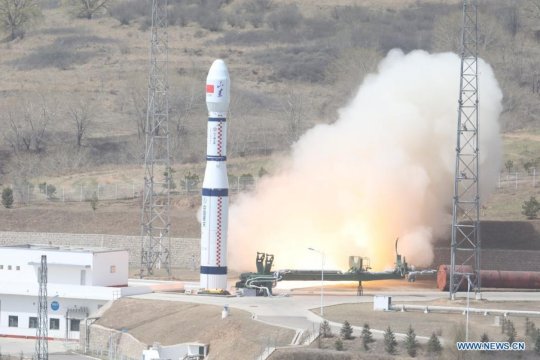
View On WordPress
0 notes
Text
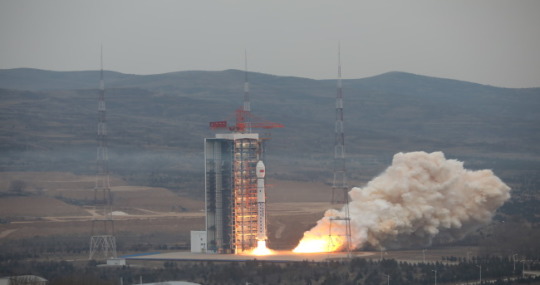
China launches new Earth observation satellite
#SatelliteLaunch#China#Earthobservationsatellite#space#Taiyuan#technology#worldnews#asia#science#satellite#Shanxi
1 note
·
View note
Text
China launches Tianhui II-02 satellite group into orbit
China launches Tianhui II-02 satellite group into orbit
China launched the Tianhui II-02 satellite group into orbit using the Changzheng-4B launch vehicle.
China successfully launched the Tianhui II-02 satellite group from the Taiyuan Satellite Launch Center in northern China’s Shanxi Province at 6:32 a.m. (Beijing time) on Thursday.
The satellite group was carried into orbit by a Long March-4B carrier rocket.
It was the 384th mission of the Long…
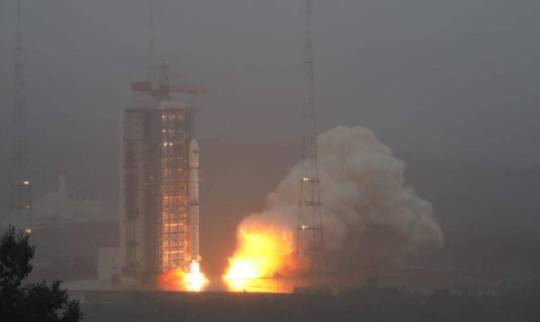
View On WordPress
0 notes